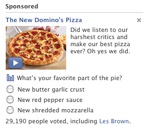The right tool for the job

Finding the right social media tool.
My husband is a carpenter, so he’s into tools. As a social media guru, so am I. Whenever we come up with a project, we immediately start thinking about what tools we have and what we may need to buy. We’ll scour yard sales, flea markets and the Internet to find just the right compound miter saw or three-phase plasma cutter — often to the detriment of the job itself.
Though perhaps not as exotic as a four-foot finger brake or Pittsburgh lock-seam hammer, the most exciting social media tool is video. Healthcare professionals are learning to take advantage of video along with everything else in their toolbox, as this online marketing blog explains. Surgeons have used Twitter, for example, to tweet out live procedures from the O.R. — the first being a surgery to remove a cancerous tumor from someone’s kidney. Universities such as Stanford are using video on Facebook for question-and-answer sessions between professors and students. Mainstream media is now plugging into social media for obvious reasons — mainly because they know their audiences are plugged in.Read full post...

























